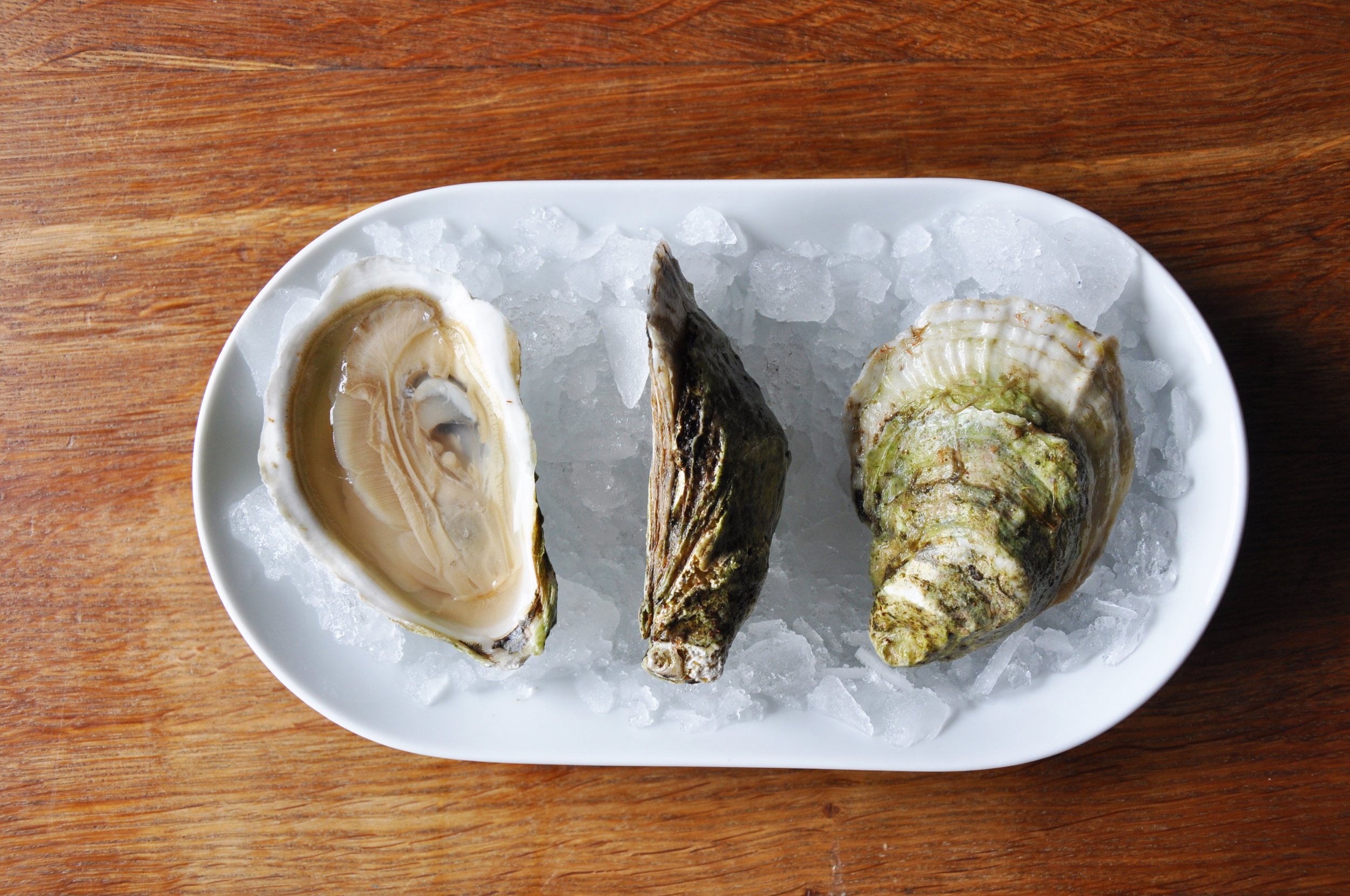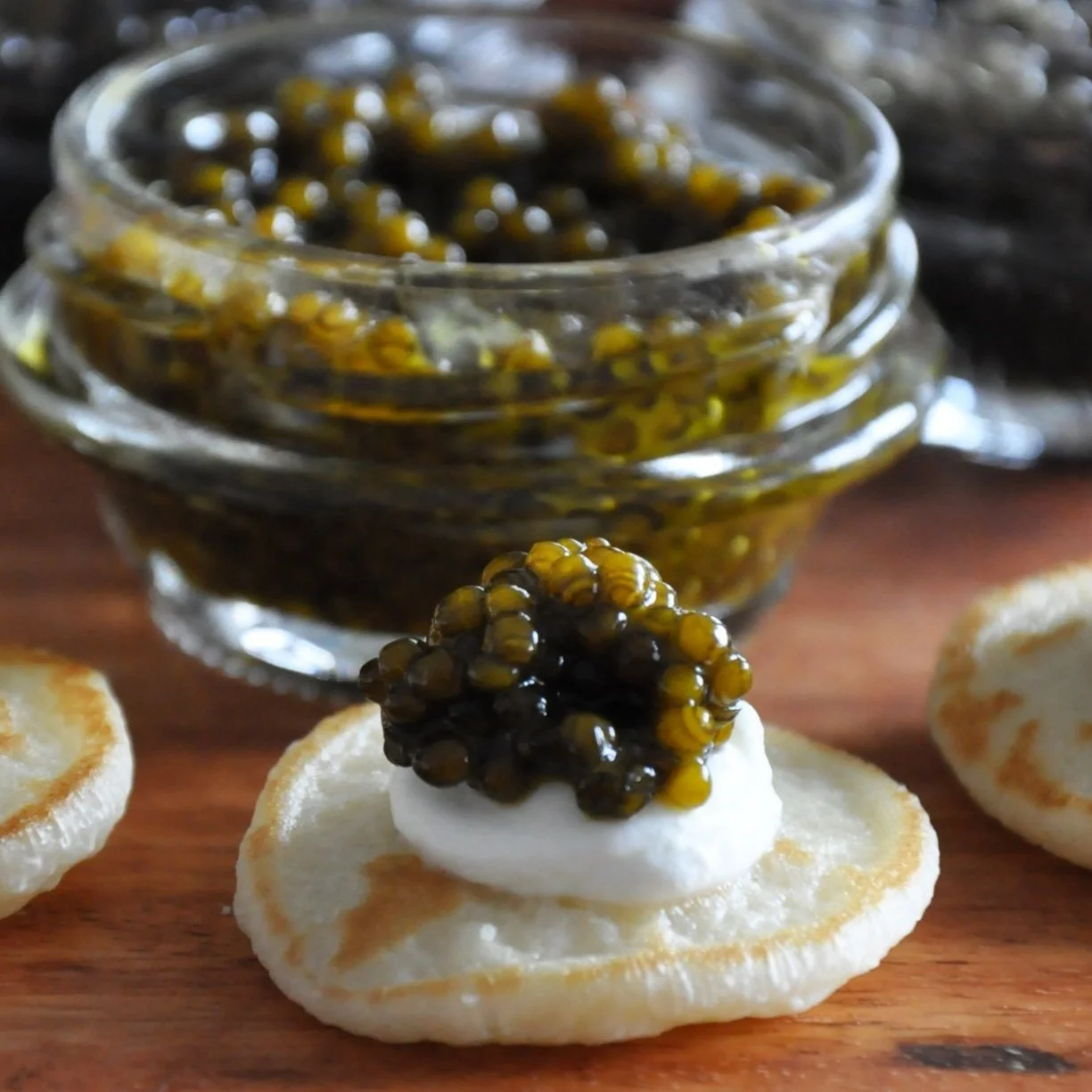
rotating seasonal varieties
oysters
IT'S OUR JOB TO SOURCE THE OYSTERS OF YOUR DREAMS.
WE BUILD PROGRAMS WITH YOU BASED ON SIZE, LOCATION AND TASTING NOTES. WE KNOW WHAT'S GOOD AND CAN HELP YOU FIND WHAT YOU’RE LOOKING FOR.
-
EAST COAST USA
Our relationships with local farmers grant us access to the incredible diversity and nuance of flavor in every New England Bay.
Tasting Notes — deliciously briny with high salinity, minerality, and sweet, vegetal notes

-
EAST COAST CANADA
Oysters are tumbled to achieve a smaller and more manicured shell.
Tasting Notes — briny with a sweet, creamy finish

-
WEST COAST USA & CANADA
Showcasing a luxurious variety of west-coast oysters shipped fresh every day. Talk to your rep!
Tasting Notes — mild brine, notes of melon and cucumber

preparing for winter — ben suddard and south bay blonde oysters in wareham, ma
portfolio product
south bay blonde
South Bay Blonde oysters are planted in an upweller then transferred to float cages to provide optimal nutrients for healthy growth and a superior flavor profile. With an average size of 3" - 3 1/2" across, they are tumbled to provide a smooth, dense, manicured shell.
The Suddard family has been oystering in Wareham for more than 100 years. The coastal leases they work today were granted by a Civil War General to the late Ben Suddard’s great-grandfather.
Their flavor profie is salty, slightly sweet brininess with a complementing minerality, with hints of butter, celery and eelgrass.
SHELLFISH FARMING is THE ONLY COMMERCIAL-SCALE PROTEIN PRODUCTION THAt PROVIDES A NET BENEFIT TO its ENVIRONMENT. OYSTERS ARE NATURAL OCEAN CLEANERS AND PROTECT THE ECOSYSTEM.

Spotlight — cranberry island Oysters
Tasting notes — strong pop of brine up front and a lingering finish of limestone and whipped kelp butter
Mount Desert island, ME | Availability Year-round | Farmer Lauren Gray
write your own recipe with wulf’s fish
chefs love Wulf’s oyster selection
“I love South Bay Blondes! One of my favorite oysters. Perfect size cup and shape. Not too large or too small. Slightly sweet but super briny. Reminds me of hot summer days on the cape.”
oyster glossary
-

Bottom planted
As close as you can get to wild oyster growing. Spat is spread on the ocean floor and thrives in the same water and living conditions as wild oysters.
Pros: produces tough and healthy shells.
Cons: farmers lose oysters to nature.
-

Brine
The salty liquid or “liquor” of an oyster. Oysters take on the salinity of the water they grow in.
-

Cages
Metal cages that hold bags of oyster seed to protect them from predators and harsh ocean conditions.
Cages are turned to evenly distribute access to tidal flow and food.
-
Grow-out bags
Housed inside cages, they provide more protection to the oysters.
-
RACK-AND-BAG CULTURE
Adapted from French aquaculture. Hundreds of oysters are placed in grow-out bags fastened to rebar racks to elevate the oysters above the ocean floor.
This elevation allows superior tidal flow to encompass the oysters so they can easily feast on natural phytoplankton and nutrients in the water column.
-
OFF-BOTTOM CULTURE
Methods of growing that keeps oysters above the ocean floor.
Pros: oysters are more enclosed and protected, producing higher yield.
Cons: More money and effort spent on growing gear.
-
SURFACE/FLOATING CULTURE
Floating oysters typically never dry out and get the benefit of high wave activity that naturally tumbles them.
-
spat
Baby oysters after they have set to a grow structure. It’s common for oyster farmers to buy spat that has been spawned and fertilized in a hatchery.
-
GROW-OUT TRAYS
Trays serve the same function as grow-out bags but can be stacked to maximize space.
-
TUMBLED
Promotes uniform and strong shells by chiseling oysters in a tumbler or naturally by tides.
-
UPWELLER
A water flow system that constantly pumps nutrient-rich water up through and around the oyster seed to feed them phytoplankton and other nutrients.
You want it, we’ve got it
















